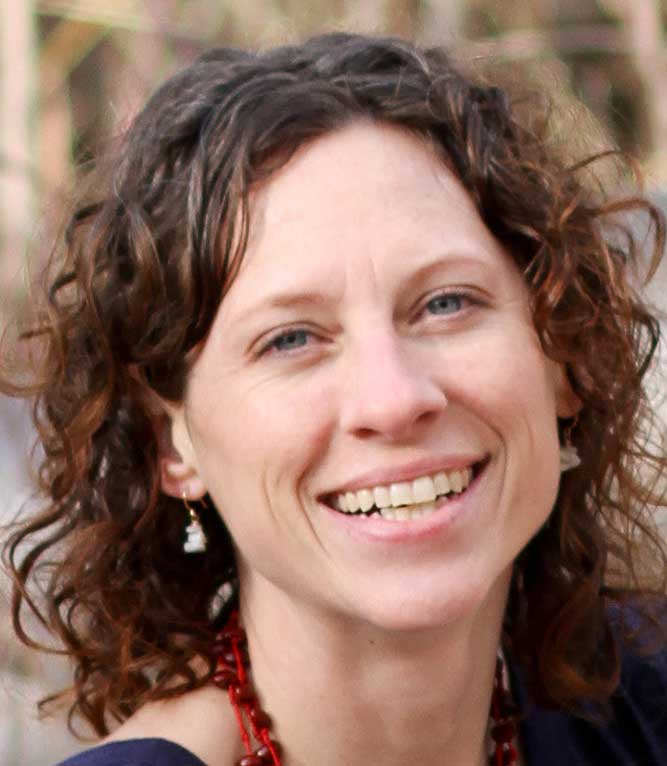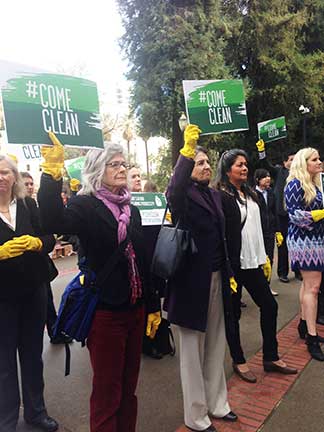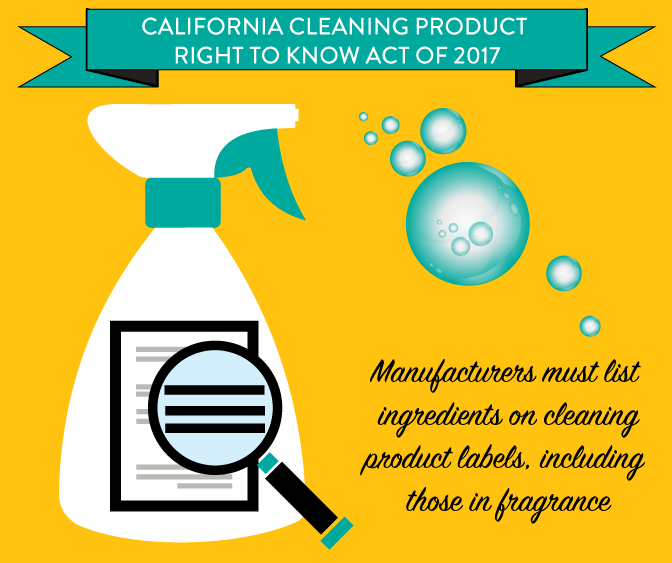Deep Cleaning A Dirty Industry
“Women bear the burden of exposure to harmful chemicals in cleaning products, and it’s women who are forcing the manufacturers of these products to come clean about their ingredients.” —Erin Switalski, Executive Director for Women’s Voices for the Earth
Ever wonder what makes cleaning products smell so good? If you’re a woman, your answer is probably yes. While culture is shifting, studies show women are still doing the majority of cleaning, both in the home and in the workplace. About 70% of the housework in the average American home is done by women and 90% of maids and housekeepers are women. As an organization that focuses on consumer products that impact women’s health, Women’s Voices for the Earth (WVE) did a lot more than wonder. They went directly to the cleaning product manufacturers and asked: “What do you put in your products that makes them smell so good?” Not surprisingly, these companies didn’t willingly disclose their trade secrets. But because WVE didn’t stop asking, these clandestine policies changed.
Even a decade ago, with few existing standards requiring companies to disclose ingredients, major companies kept their customers in the dark about just what might be in their fragrances. The tide turned in 2007 when WVE published their breakthrough investigative research on the toxic ingredients in cleaning products. In a series of candid reports—Household Hazards, What’s that Smell, and The Dirt on Cleaning Product Companies—Switalski and her team’s Safe Cleaning Products Initiative planted the seeds of revolt among the very customers the makers of cleaning products value most—women.
What began as a consumer right-to-know issue became a blueprint for how companies can make transparent decisions about ingredients. Led by Switalski and her team, the Safe Cleaning Products Initiative hopes to move the entire cleaning industry to make only products that are safe for women, families, and the Earth.

ERIN SWITALSKI – WOMEN’S VOICES FOR THE EARTH
In collaboration with:
Clean Production Action
Michigan Clean Water Action
Healthy Legacy Coalition
Conservation Minnesota
Taking the Fight Directly to the Boardrooms
Since that pivotal moment when WVE brought to light the dangers of fragrance chemicals, their strategy has been two-fold: first empower the companies target customers with knowledge and, then, since there’s no government watchdog regulating what’s in their products, pressure these companies to be transparent.
Amazingly, by 2011, Switalski and her colleagues were able to confront the consumer products behemoth at the highest levels, in their boardroom, forcing SC Johnson to disclose all their ingredients save those in their fragrances. Not ready to settle for anything other than full disclosure, WVE and their advocates put the pressure on.
In a 2013 report called Secret Scents, the organization documented how women are disproportionately impacted by exposure to fragrance chemicals. “The report,” says Switalski, “also highlighted how the European Union was taking aim at fragrance allergens and encouraged consumers in the U.S. to demand the same.” Shortly thereafter, WVE launched whatsreallyinsidescjohnson.com and collected 51,000 signatures from women who demanded the company come forward with the secret sauce in their fragrance. It worked: SC Johnson announced they would begin to disclose the product-specific fragrance ingredients in their cleaning and air-care products in 2015.
In a 2013 report called Secret Scents, the organization documented how women are disproportionately impacted by exposure to fragrance chemicals.
The Galaxolide Campaign
Once SC Johnson published their fragrance ingredients, WVE’s research revealed that over 80 of SC Johnson’s products contained Galaxolide, a synthetic fragrance ingredient that accumulates in our bodies and water supplies. Although the company claimed high safety standards, SC Johnson was indiscriminately using a toxic chemical linked to endocrine disruption, immune dysfunction, and cancer. When this toxic chemical showed up in particularly high levels in the Great Lakes, WVE gained formidable partners in Michigan Clean Water Action, Healthy Legacy Coalition, and Conservation Minnesota–local conservation groups whose members were stunned and outraged by the amount of Galaxolide found in the Great Lakes.
WVE’s first action was to commission Clean Production Action to prepare an independent GreenScreen assessment. Galaxolide was identified as a Benchmark 1 chemical—bio-accumulative, persistent and hazardous to both human and environmental health. At this point, WVE asked SC Johnson to remove Galaxolide from their products but the company flatly refused. Toxic or not, Galoxolide was the basis of their fragrance formulas.

Despite tough pushback from SC Johnson, following the release of the GreenScreen Assessment, WVE garnered the support of top scientists across the country who sent SC Johnson an open letter expressing their concerns about the environmental and human health impacts of Galaxolide. In addition, the organization collected over 20,000 signatures from concerned consumers.
The story of Galaxolide illustrates both the effectiveness of WVE’s approach and the enormity of the problem of non-disclosure. This hazardous ingredient is used in everything from perfumes and cosmetics to detergents and fabric softeners—and the SC Johnson Company is but one of scores of manufacturers who formulate the name-brand cleaners that land in our shopping carts.
“This is why ingredient transparency is so critical,” said Switalski. “Without disclosure, it would have been very difficult to know exactly where SC Johnson was using Galoxolide.”
Key Strategies
1
We commissioned a GreenScreen for Safer Chemicals Assessment of Galaxolide to obtain a well-respected third-party assessment of the chemical’s safety.
2
We worked with clean water organizations in the Great Lakes region to put pressure on the Wisconsin-headquartered SC Johnson.
3
We authored a scientist sign-on letter, signed by more than 20 prominent scientists, to urge SC Johnson to discontinue their use of Galaxolide.
4
We made sure women’s voices were heard, asking SC Johnson to phase out Galaxolide through online petitions, social media and email campaigns.
Having Won the Battle,
WVE Is Set to Win the War
In March 2017, SC Johnson released a statement saying that they would transition away from using Galaxolide in their products. “Ingredient transparency leads to safer products,” said Switalski, citing the case of Galaxolide and SC Johnson.
Getting Galaxolide out of cleaning products in the U.S. was a major victory for the Safe Cleaning Products Initiative, but Switalski and her team are taking a more comprehensive approach to move the entire cleaning industry toward transparency and safety.
In November 2017, WVE released the Health First Roadmap, to help the cleaning product industry select safer chemicals and thereby win the trust of consumers. This bold action signifies the power of women in targeting consumer product good companies to come clean about what’s in their products.
Thanks to WVE, women continue to speak the truth directly to the corporate offices of the powerful U.S. cleaning product industry. “Sure, we can take on one chemical, one company at a time,” asserts Switalski, “but consumers, advocates, and even manufacturers have had it with this whack-a-mole approach. It’s time for systemic change. Just watch as women put their health first and shift the entire industry.”
The RESULTS!

